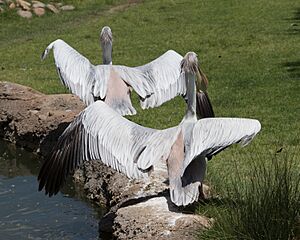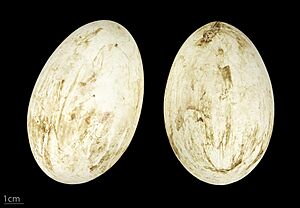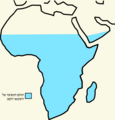Pink-backed pelican facts for kids
Quick facts for kids Pink-backed pelican |
|
|---|---|
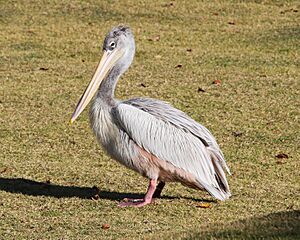 |
|
| Conservation status | |
| Scientific classification | |
| Genus: |
Pelecanus
|
| Species: |
rufescens
|
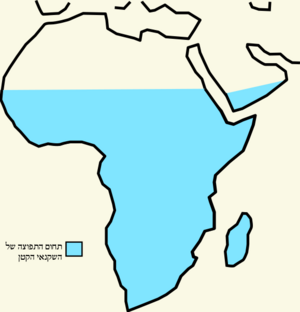 |
|
| Range map | |
The pink-backed pelican (Pelecanus rufescens) is a fascinating bird from the pelican family. These birds live in swamps and shallow lakes across Africa and the southern Arabian Peninsula. Sadly, they seem to have disappeared from Madagascar.
Contents
About the Pink-backed Pelican
The pink-backed pelican was first officially described in 1789. A German scientist named Johann Friedrich Gmelin gave it the scientific name Pelecanus rufescens. The word rufescens comes from Latin and means "reddish." This name describes the slight pink color you might sometimes see on their backs. There are no different types or subspecies of this pelican.
What Does It Look Like?
The pink-backed pelican is a medium-sized pelican. It stands about 125 to 155 centimeters (49 to 61 inches) tall. Its wings can spread wide, from 2.15 to 2.9 meters (7 to 9.5 feet) across. These birds usually weigh between 4 and 7 kilograms (9 to 15 pounds). Their long bills are about 30 to 38 centimeters (12 to 15 inches) long.
Their feathers are mostly grey and white. Sometimes, you can see a soft pink color on their backs. This pink is much lighter than the bright pink of a flamingo. The top part of their bill is yellow, and their throat pouch is usually grey. When they are ready to breed, adult pelicans grow long feathers on their heads.
The pink-backed pelican often lives in the same places as the great white pelican. You can tell them apart because the great white pelican is usually bigger. Also, the great white pelican has white feathers, while the pink-backed pelican has greyish ones.
Where They Live and Their Life Cycle
Pink-backed pelicans live in many different water environments. They prefer calm, shallow waters and avoid places with steep, bushy banks. They love freshwater lakes, swamps, and slow-moving rivers. They also use reservoirs and areas that flood during certain seasons. Sometimes, they can be found in salty lakes or along the coast in bays.
These pelicans often rest and build their nests in trees, like mangroves. They can also nest on sandy islands, cliffs, or sand-dunes. Many nests are built close together in the same trees. They reuse these nesting spots every year until the trees can no longer hold them. Even then, the birds usually stay in the same general area.
Their nests are large piles of sticks. They can be built high up, sometimes 10 to 50 meters (33 to 164 feet) above the ground. The female pelican lays two or three large white eggs. After the chicks hatch, they get their food by reaching deep into the adult's pouch. They eat fish that the adult has already partly digested.
What Do They Eat?
Pink-backed pelicans mainly eat fish. They can catch fish up to 450 grams (1 pound), but they usually prefer fish weighing between 80 and 290 grams (3 to 10 ounces). They also eat amphibians, like frogs. These pelicans often hunt for food in groups, working together to catch their prey. Some of the fish they eat include types of cichlids, like Haplochromis and Tilapia.
Images for kids



